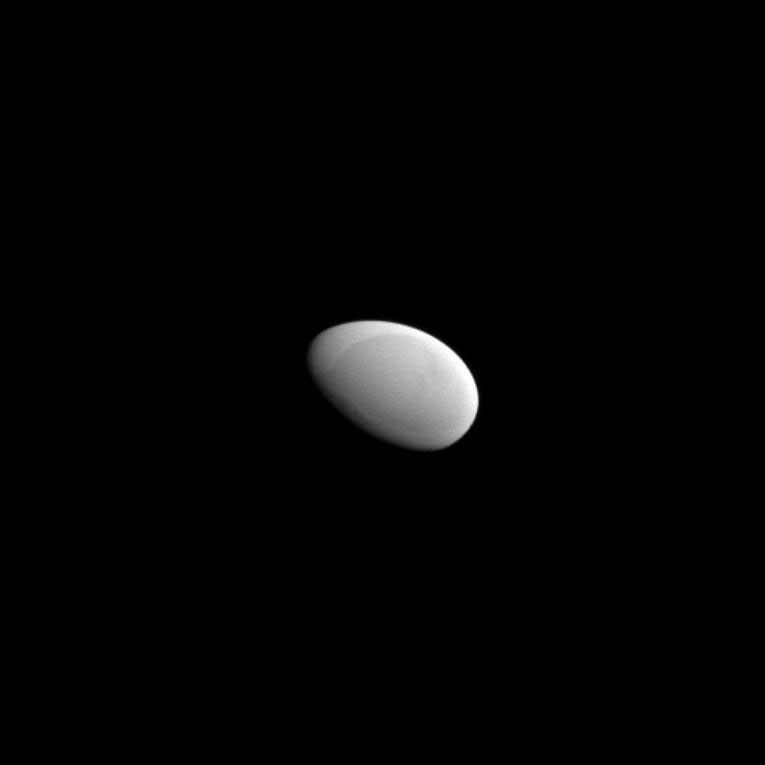Methone
Contents
Discovery
The Cassini Imaging Team discovered Methone on June 1, 2004. Methone and nearby Pallene were the first moons discovered in Cassini images.
Overview
Methone is a tiny 1-mile (1.6-kilometer) mean radius moon that orbits between Mimas and Enceladus at a radius of 120,546 miles (194,000 kilometers) from Saturn. Scientists have two theories to explain the presence of Methone and two other tiny sister moons, Pallene and Anthe. First, the three moons may have split from either Mimas or Enceladus. Second, all five moons may be the remains of a larger swarm that traveled in that area close to Saturn.
Methone orbits Saturn in 24 hours. Methone, Pallene and Anthe, all orbit at very similar distances from Saturn – they are in a dynamical relationship. Mimas strongly perturbs the three moons, all of which orbit between Mimas and Enceladus. The vastly more massive Mimas causes the Methonean orbit to vary by as much as 12.4 miles (20 km), it causes Pallene to vary by a slightly smaller amount and it has the greatest effect on Anthe.
Because these three tiny moons (Methone, Pallene and Anthe) orbit at very similar distances from Saturn, they are in a dynamical relationship. Mimas strongly perturbs the three moons, all of which orbit between Mimas and the Enceladus. The vastly more massive Mimas causes the Methone orbit to vary by as much as 12.4 miles (20 km), causes Pallene to vary by a slightly smaller amount, and has the greatest effect on Anthe.
These three moons may also be contributing particles to Saturn's E-ring. The moons are small and were only recently discovered. Consequently, astronomers have few details on characteristics of these moons such as reflectivity (albedo), rotation (probably tidally locked on Saturn because they are so close) and composition.
How Methone Got its Name
John Herschel suggested that the moons of Saturn be associated with the mythical brothers and sisters of Kronus. (Kronus is the equivalent of the Roman god Saturn in Greek mythology.)
The name Methone comes from the name in Greek mythology of one of seven Alkyonides – daughters of the god (or Titan) Alkyoneus. Alkyoneus sprang from Gaea and the blood of Uranus. This blood was spilled when Uranus' son – and Alkyoneus' brother – Kronus castrated his father. Herakles (Hercules) killed Alkyoneus in the war between the gods of Mount Olympus and the Titans. Overcome by grief, the daughters threw themselves into the sea to die, but the goddess Amphitrite took pity on them and transformed them into halcyons or kingfishers.
Astronomers also refer to Methone as Saturn XXXII or S/2004 S1. The International Astronomical Union now controls the official naming of astronomical bodies



































